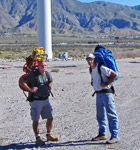Since Chemtura is actually an aggregation of a few chemical companies through a lot of merging and acquisitions, it led to a company that not only had assets, but also legacy liabilities. It’s just the inevitable consequence that comes out of that process. Bankruptcy gave us the opportunity to shed a number of those liabilities and to emerge with little to no litigation. We were able to ask ourselves, ‘What does that teach us about the future?’ We serve a lot of niche markets including agriculture and transportation, so we service a variety of industries in a large part of the world. We are focused on innovation, progress, and managing a portfolio of specialty.
My approach is one that stresses teamwork. We have lawyers that are focused on the business itself; we have regional lawyers that have responsibility for those regions and expert lawyers who focus on their area of expertise. It’s important that we all work together to serve our company. It requires frequent communication, bimonthly staff meetings for all the lawyers, conference calls, and webcasts.
RUNNING THE NUMBERS
of Chemtura
100+
countries Chemtura sells to
4,300
approximation of employees in research, manufacturing, sales and administrative facilities worldwide
35
staff members that Billie Flaherty manages
internationally
22%
reduction in Chemtura’s greenhouse-gas emissions between 2008 and 2010
8%
reduction in Chemtura’s overall energy consumption between 2008 and 2010
We really unite around departmental commitments and results. We spend time defining areas of improvement and what we intend to achieve. It results in a uniformity of focus amongst all the legal staff, and we cascade those commitments down to everyone in the organization. We launched a number of new technology efforts both within the law department and the organization as a whole, including Chemtura Connect, a way for international staff to communicate via the Internet. For instance, we have a legal-entity-management system that has historically been managed by one corporate paralegal and is not easily shared. We’re in the process of replacing that with something that can be shared globally. We’re looking to new communication technologies to assist us there.
We’re also launching an enterprise-contract-management system. In essence, it’s born out of the requirement to have records. So we implemented an information-sharing system, which will allow us to file them in a place where they can easily be retrieved by anybody around the globe. That will be available to the vast majority of all the employees and allows our commercial lawyers to start a generation of a contract by a template. This global communication improves our response time and also makes it easier for both procurement and sales people to enter into the contract. It’s all about communication.
Going through Chapter 11 was actually the catalyst that enabled this team to come together. Communication generally moved up the hierarchical pang prior to Chemtura Connect. There was less communication through peers that could add value throughout the process. Lawyers reaching out to each other was much less the norm than reporting to your boss. So this technology and management style really encourages cooperation and collaboration. We all needed to get it done and we all needed to row together. It allowed us to all bond around a single process and created a teamwork that I’ve been jealously guarding and trying to expand upon. I really believe our work product is much stronger when we’re all working together.

